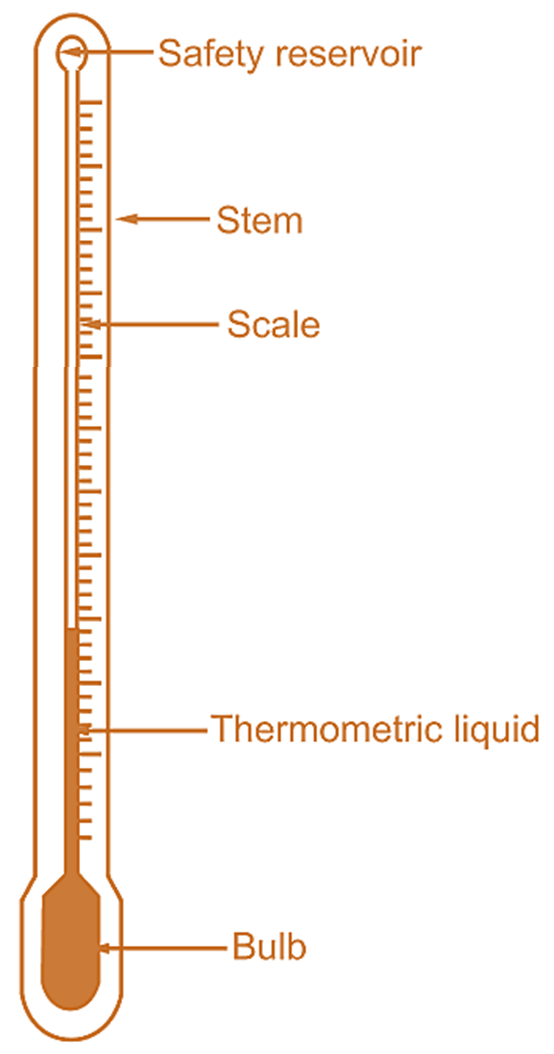
Figure 1: Liquid in Glass Thermometer.
Construction & Working of Liquid in Glass Thermometer
Liquid in Glass Thermometer consists of glass envelope filled in with liquid and calibrated indicating scale marked on it. The envelope comprises a thick walled glass tube with a capillary bore and a spherical or cylindrical bulb filled with liquid. The two parts are fused together and top of capillary tube is sealed. The size of capillary tube depends on:
- Size of sensing bulb.
- Liquid filled in it.
- Temperature range of thermometer.
The change in temperature causes fluid to expand and rise up the stem. The volume enclosed in stem above liquid may contain vacuum or it may be filled with inert gas. The liquid filled in thermometer is called thermometric fluid.
Table 1: The different thermometric fluids used
| Thermometric fluid | Range |
| Mercury | – 35°C to 510°C |
| Alcohol | – 80°C to 70°C |
| Toluene | – 80°C to 100°C |
| Methyl chloride | 0°C to 50°C |
Generally, liquid used is mercury.
Advantages of Mercury
- It has linear coefficient of expansion.
- It does not stick to glass surface.
- It is clearly visible in transparent glass.
Advantages of Liquid in Glass Thermometer
- Simple to use and relatively cheaper.
- No auxiliary power is required.
- Wide range of measurement.
- Good accuracy.
Disadvantages of Liquid in Glass Thermometer
- They are fragile in nature.
- Can not be adopted for automatic recording.
- Time lag in measurement.